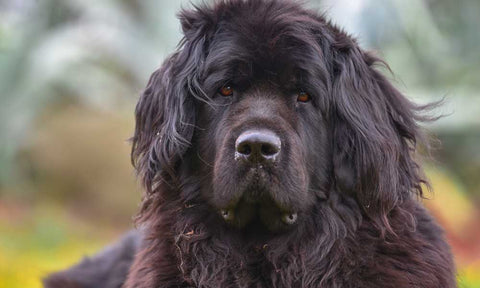Is our number one priority
Newfoundland

The family-oriented Newfoundland dog
A Newfoundland dog is a large, teddy bear-like companion dog that was previously and still is used in some places as a search and rescue dog. It is the perfect dog for first-time owners, as it is unusually calm, friendly, welcoming and adaptable. In fact, it is the perfect family dog if you are looking for a dog that likes children, is protective and easy to train.However, the breed is not for cleaning fanatics and people with very small apartments. It needs space to frolic as it is a large dog.
Newfoundland dog, gift of the gods
The Newfoundland breed originates, as the name indicates, from Newfoundland. Here the breed was used as a working dog both on land and in water, from which its great love of water originates. In addition, it was the protector and company of the women when their husbands were out fishing or hunting. The dogs were considered a gift from God, as they were of great importance to the people and held a relevant and significant position in society.In 1780, the dog began to be exported from Newfoundland to England, therefore the number of Newfoundland dogs was greatly reduced on the island. The export meant that the breed almost disappeared. However, it was saved by means of intensive breeding on the island. However, it was England that took responsibility and credit for the actual breeding and setting of a breed standard for a Newfoundland dog in 1866.
In the 1970s and up until the 1980s, Newfoundland dogs were quite popular in Denmark, where the Danish breeders of this dog became world-renowned for their good breeding programs and the dogs that came out of them. In Denmark, the breed is mostly used and known as a fantastic family dog, but in France and other places in the world, it is also a working dog, especially with the coastguard as a rescue dog.
A dog with a teddy bear-like appearance
You have to look for a dog like the Newfoundland breed for a long time. It is not just tall, it is also large and full-bodied. It measures 66 to 71 centimeters and weighs between 54 and 68 kilograms on average. Despite its large size, it is an athletic, fast and strong dog that is both a born swimmer and a great working dog.Its head is proportionally small in contrast to its body. It has a medium-length snout and a prominent forehead, two deep-set eyes and long ears that lie close down and encircle the head. Its expression is both friendly, cuddly and a bit mournful, making anyone melt when its big tongue hangs limply out of its big mouth like a teddy bear.
This dog's coat is probably the one that requires the most work if you choose this breed. It has a lot of fur, which is long, and a dense thick undercoat. This means that a lot of dirt easily accumulates in its coat and needs to be brushed often, as it sheds a lot. You can expect to spend at least an hour weekly brushing and combing its coat. This is best done with a quality brush, a comb and a deshedder. If you do this, you also prevent it from shedding too much. But you still have to count on having to vacuum a little more. This can be done with a vacuum cleaner nozzle for dog hair. In addition, it is good to have a utility room, basement or something else that the dog can stay in if it has been out in the rain or slush, as dirt and grime easily settles in its fur, especially on the tail.
The fur comes in either black, white-black or brown. The white-black dog differs from the others as it is more active and eager to learn new things.
Newfoundlander – the friendliest dog in the world
A Newfoundland dog is a calm breed that is both easy to socialize and train and is closely attached to its family. It takes great pleasure in being in close contact with its owner, as it is used to following its owner everywhere. The people it bonds with, will forever assist and take care of, whether it's in the water or next to a pram outside. It loves children and is both patient and playful.Despite its calm demeanor, it needs activation. It is used to working and using its brain, therefore you as the owner must also employ it. You can, for example, give it the task of fetching the newspaper, helping with household chores or activating its very sharp brain through interactive dog toys. Especially when your Newfoundland is a puppy, it needs activation so that it does not become restless. Swimming, search work and practicing carrying different things are good exercises.
You can easily train your Newfoundland puppy because it learns fast and easily. It adjusts easily and really just wants to please its owner. But it's best done with friendly guidance, you won't get far with force or inconsistent training.